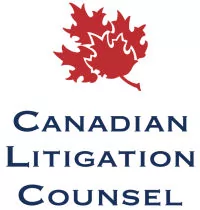The scope and protection afforded to a mortgage creditor by the standard mortgage endorsement was again analyzed by the Court of Appeal in Roma Capital inc. 2023 QCCA 307.
It should be noted that in this decision rendered on March 7, 2023, the Court of Appeal was hesitant since the decision was rendered on a two-to-one basis.
Background
In February 2017, Roma Capital Inc (the Lender) granted the insured a mortgage loan of $220,000.00 for the purchase of a building located in Berthierville. A condition of the loan was to subscribe to a home insurance policy naming the Lender as mortgagee. The policy as issued contained a standard mortgage guarantee clause approved by the Insurance Bureau of Canada. The insured was planning to renovate the building and the insurer authorized her to leave it vacant for one year and issued an endorsement to that effect to the policy. A few months later, in May 2017, the building was destroyed by fire. The insurer refused to indemnify both the insured and the Lender. The insurer's refusal was based on the application of an exclusion for vandalism even when the building was vacant with the insurer's authorization. The trial judge was of the opinion that the fire, resulting from an intentional and wrongful act, was an act of vandalism leading to the application of the exclusion provided in the policy. Furthermore, the judge held that the vandalism exclusion is enforceable against the lender notwithstanding the mortgage guarantee clause.
The decision was appealed by the Lender and in a split decision, the Court of Appeal agreed, overturning the judgment and ordering the insurer to pay the mortgagee the balance of its claim.
It is well known that the standard mortgage endorsement (Mortgage Guaranty Clause) is a separate contract between the insurer and the creditor rendering unenforceable against the creditor "the acts, negligence or declarations of the owners, tenants or occupants of the secured property, particularly with respect to transfers of interest, vacancy, unoccupancy or use of the premises for purposes more dangerous than those declared.''
In addition, this Mortgage Security Clause provides that the terms thereof "shall otherwise prevail as to the interests of the mortgagees against all provisions of the contract.''
Justice Kalichman of the Court of Appeal, dissenting, noted that in this case, the vacancy had been authorized by an endorsement and it was the vandalism exception that the insurer was invoking. For this appeal judge, "The fact that the vandalism occurred while the building was vacant is irrelevant." Therefore, the vandalism exclusion did not conflict with the terms of the Mortgage Guaranty Clause and, in his view, the first judge did not err in this regard in ruling that the vandalism exception was enforceable against the Lender.
Justices Hogue and Beaupré, however, were of the contrary opinion.
First, the majority opinion noted that, apart from the Mortgage Guaranty Clause, vandalism is a risk covered by the policy unless it occurs during a vacancy, in which case the resulting damage is not covered and no indemnity is payable.
However, the majority of the judges underlined that it is well established that clauses in an insurance policy that are inconsistent with the Mortgage Security Clause contained therein, including exceptions, are unenforceable against the mortgagee. This clause constitutes a separate contract between the insurer and the mortgagee "for which it provides broader coverage" and whose provisions, as we have seen, prevail over those contained in the policy.
According to Justice Hogue, writing for the majority, the exclusion for losses occurring during a vacancy of more than 30 days is indistinguishable from those excluding coverage for vandalism occurring during a vacancy. In the judge's view, the exception in both cases arises from the fact that the building is vacant. The mortgage guaranty clause specifically provides that the acts of the owners (...) "particularly with respect to (...) vacancy" are not enforceable against the creditor. As a result, by invoking the exclusion, the insurer is indirectly opposing to the mortgagee an act of the insured concerning the vacancy. Finally, according to the majority opinion, the insurer's authorization of the vacancy but reiterating the vandalism exclusion does not change the situation since the provisions of the Mortgage Guaranty Clause prevail over any inconsistent provisions of the policy and particularly over the endorsement authorizing the vacancy. At best, taken as a whole, the result is that the insurance contract between the insurer and the Lender would be ambiguous and therefore should be interpreted in favor of the Lender.
The content of this article is intended to provide a general guide to the subject matter. Specialist advice should be sought about your specific circumstances.

